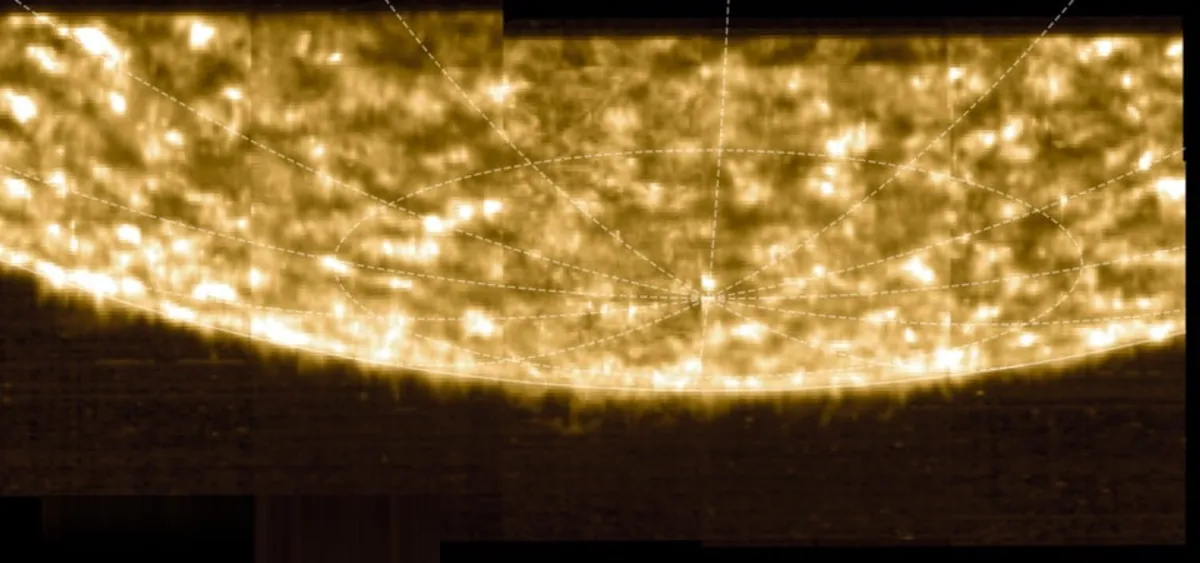
For the first time, occupants of planet Earth can glimpse the Sun’s poles through stunning images sent back by the Solar Orbiter spacecraft. This groundbreaking exploration is a collaborative effort between NASA and the European Space Agency (ESA), which launched the Solar Orbiter in 2020. Its mission has yielded remarkable discoveries, including the revelation that both of the Sun’s magnetic poles reside on the southern side of the star as observed from our planet.
Despite these fascinating findings, scientists remain perplexed by the current state of the Sun's magnetic field, which ESA describes as a chaotic mess. Understanding the Sun is critical, as it is our nearest star and serves as the giver of life on Earth. However, the Sun also has the potential to disrupt modern technology, making it essential for scientists to deepen their understanding of its behavior. Professor Carole Mundell, ESA's Director of Science, emphasized the importance of these discoveries, stating that the images of the poles mark “the beginning of a new era of solar science.”
Earth-bound observers can typically only see the Sun’s equatorial regions due to our planet’s position in a flat elliptical orbit. However, the Solar Orbiter achieved a unique vantage point by utilizing gravitational assists from both Earth and Venus. To date, the spacecraft has successfully completed one flyby of Earth and four around Venus, using these planetary gravities to adjust its trajectory without needing additional propellant. Notably, on February 18, the spacecraft made its closest approach to Venus, flying just 379 km (236 miles) above the planet's surface. This maneuver set the Solar Orbiter on a path to orbit 17 degrees below the Sun’s equator.
The Solar Orbiter arrives at a particularly significant time as the Sun approaches solar maximum, a period characterized by the reversal of its north and south magnetic poles. This phase leads to increased solar activity, resulting in the Sun emitting more radiation and charged particles than usual. Such heightened activity poses risks to Earth's electronic infrastructure, which relies heavily on satellites and data centers. In 2012, Earth narrowly escaped a catastrophic scenario when a powerful coronal mass ejection nearly impacted our planet, highlighting the importance of monitoring solar behavior.
Equipped with advanced instruments like the Polarimetric and Helioseismic Imager (PHI), Extreme Ultraviolet Imager (EUI), and the Spectral Imaging of the Coronal Environment (SPICE), the Solar Orbiter is uniquely positioned to investigate how these magnetic changes influence solar outbursts. The Sun's poles remain largely unexplored territories, and Professor Sami Solanki, leader of the PHI instrument team at the Max Planck Institute for Solar System Research, noted that these observations allow scientists to study the solar processes from an unprecedented perspective.
One of the primary goals of the Solar Orbiter is to analyze the composition of the Sun's upper atmosphere. By utilizing the SPICE spectrograph, researchers aim to gain insights into how and why the Sun ejects material into space. The spectrograph enables scientists to measure the speed of solar wind based on color variations—an advanced technique known as Doppler measurement. Frédéric Auchère, the SPICE team leader from the University of Paris-Saclay, predicted that measurements from high latitudes made possible by the Solar Orbiter will revolutionize our understanding of solar physics.
The collaboration between NASA and ESA is not new; they previously launched the Ulysses probe in 1990, which utilized a gravitational assist from Jupiter to study solar magnetic fields. Although Ulysses lacked imaging capabilities, its 17-year mission contributed valuable data that informed the design of the Solar Orbiter. Looking ahead, the Solar Orbiter is scheduled to make four more close encounters with Venus, with the next flyby set for Christmas Eve 2026. By 2030, it is expected to achieve a stable orbit spanning from pole to pole, reaching a maximum of 33 degrees below the equator.
As the Solar Orbiter continues its mission, scientists remain eager to unlock the secrets of the Sun, ensuring a better understanding of its influence on our planet and beyond.